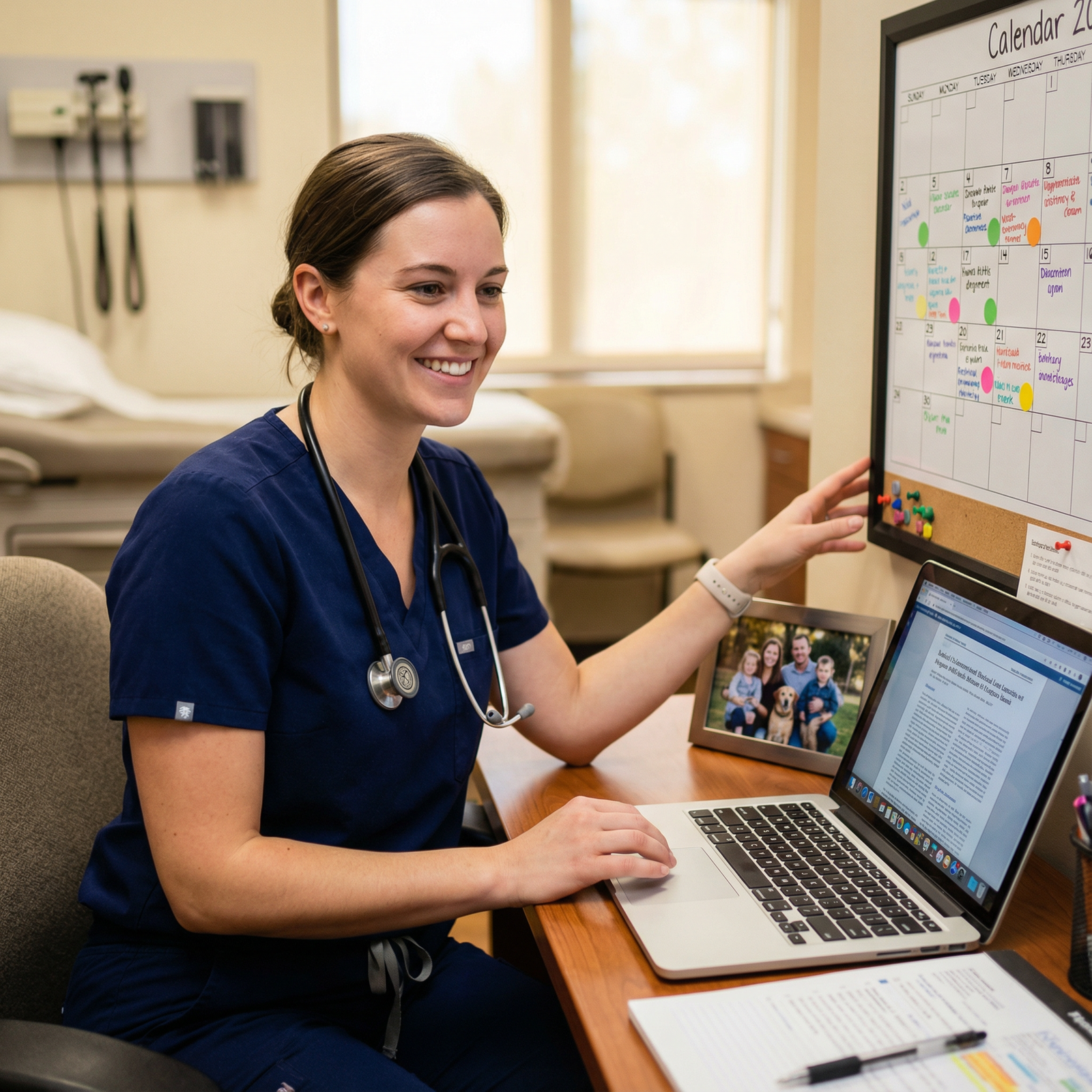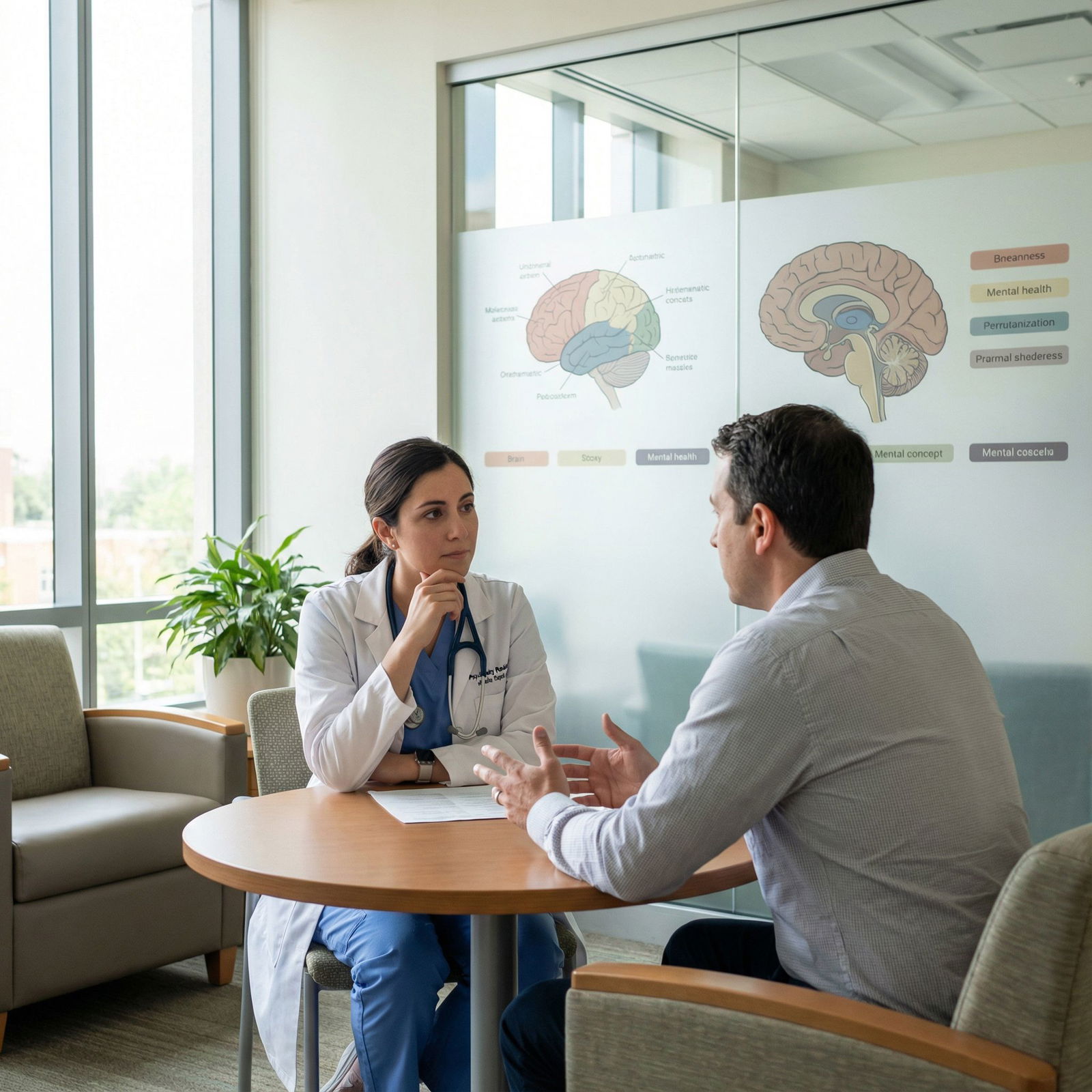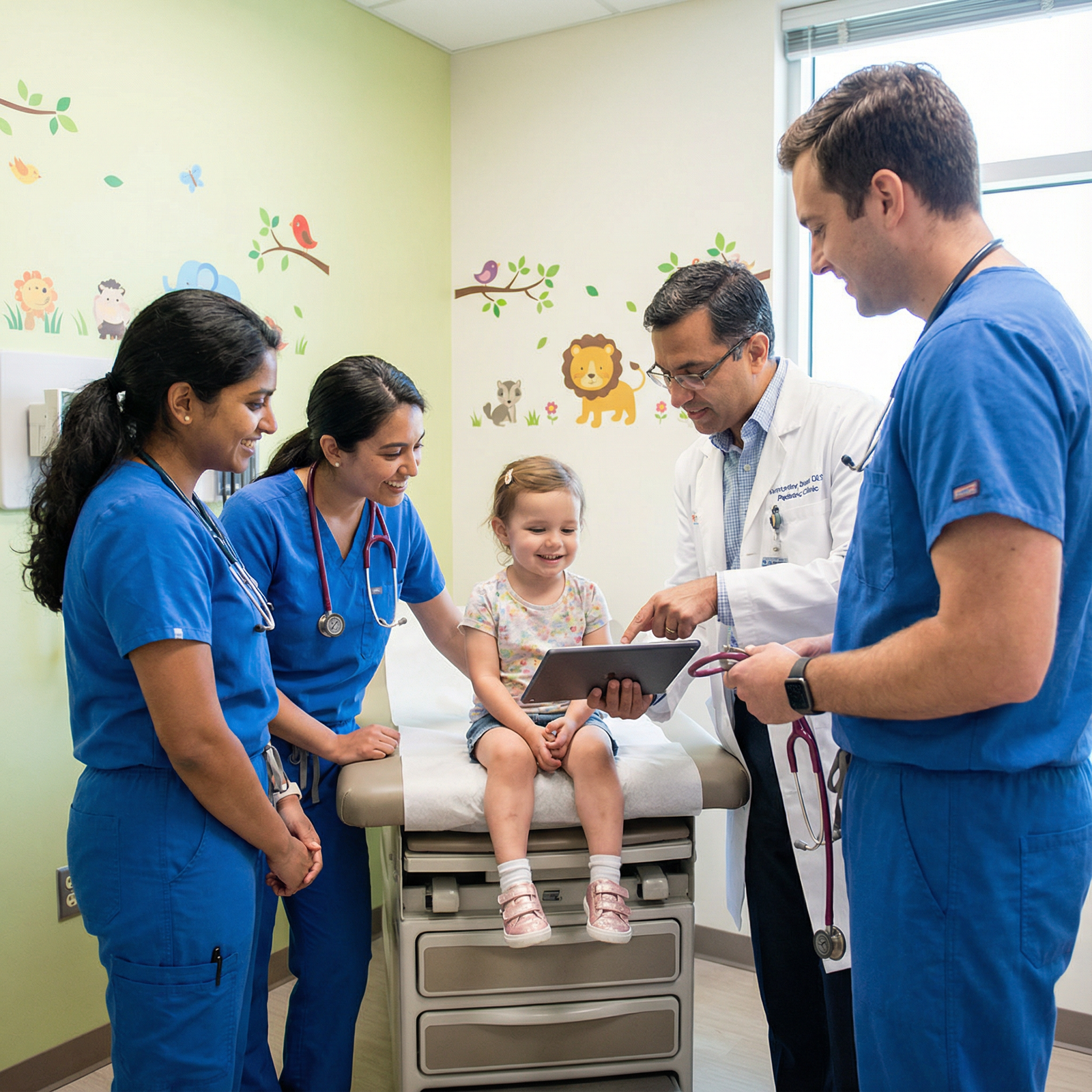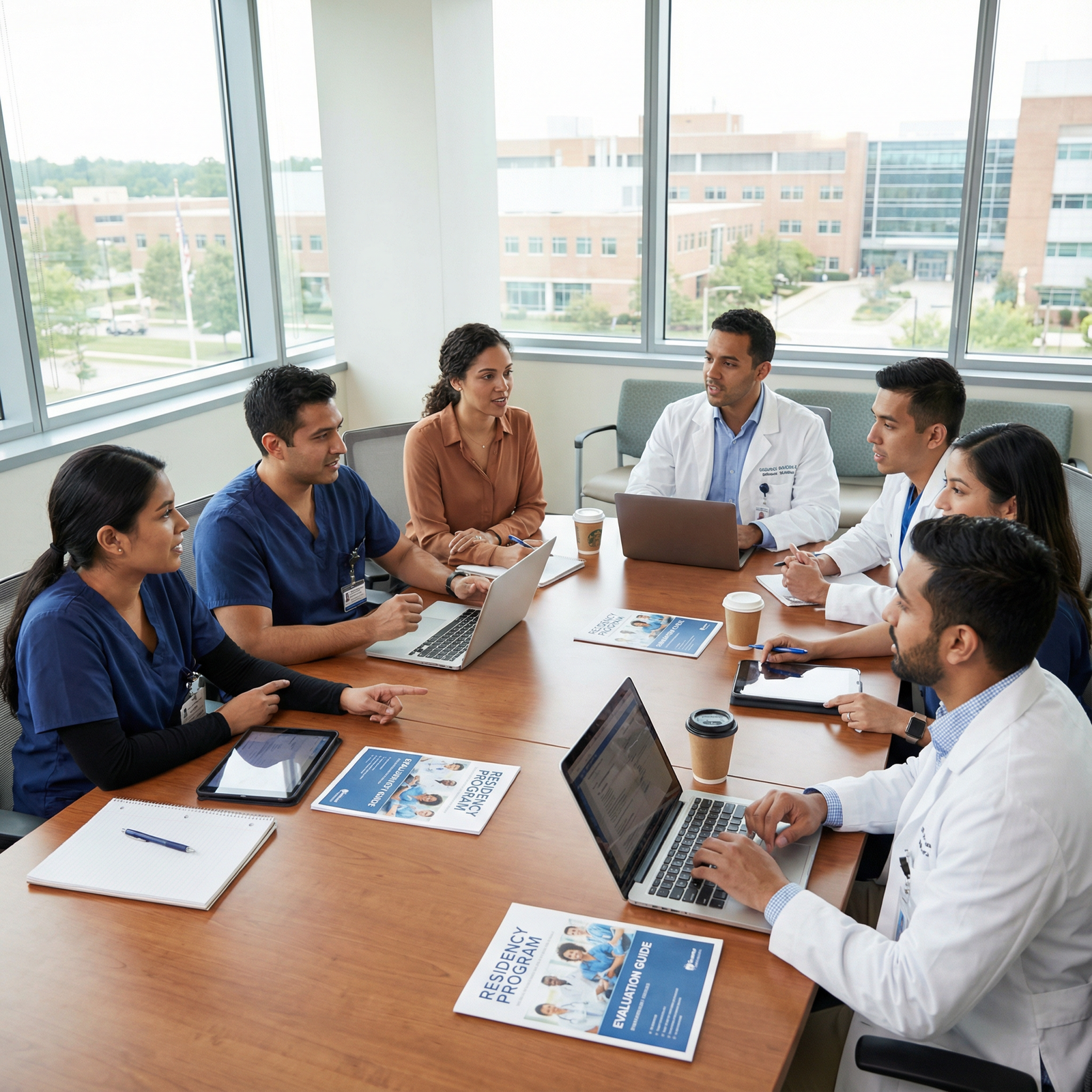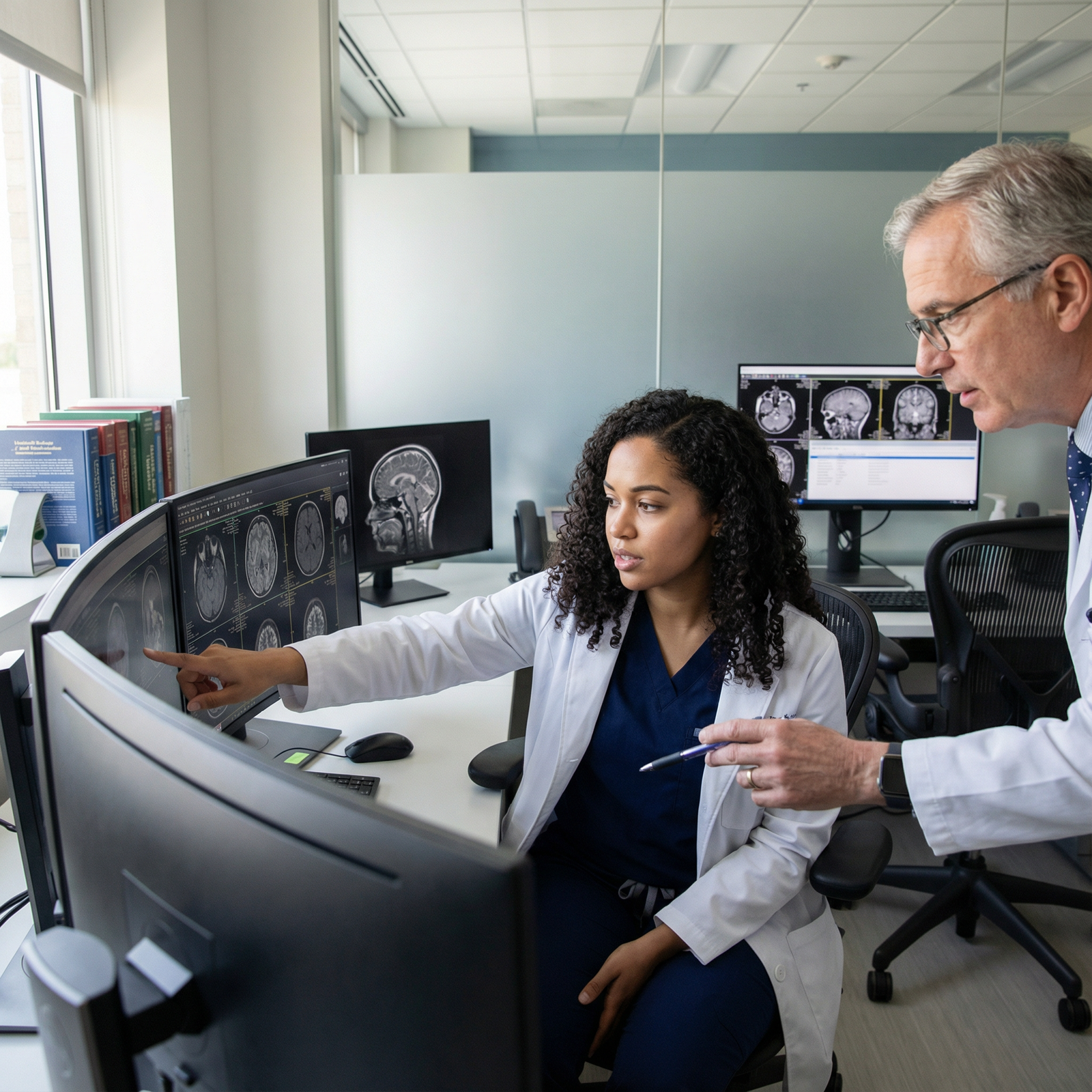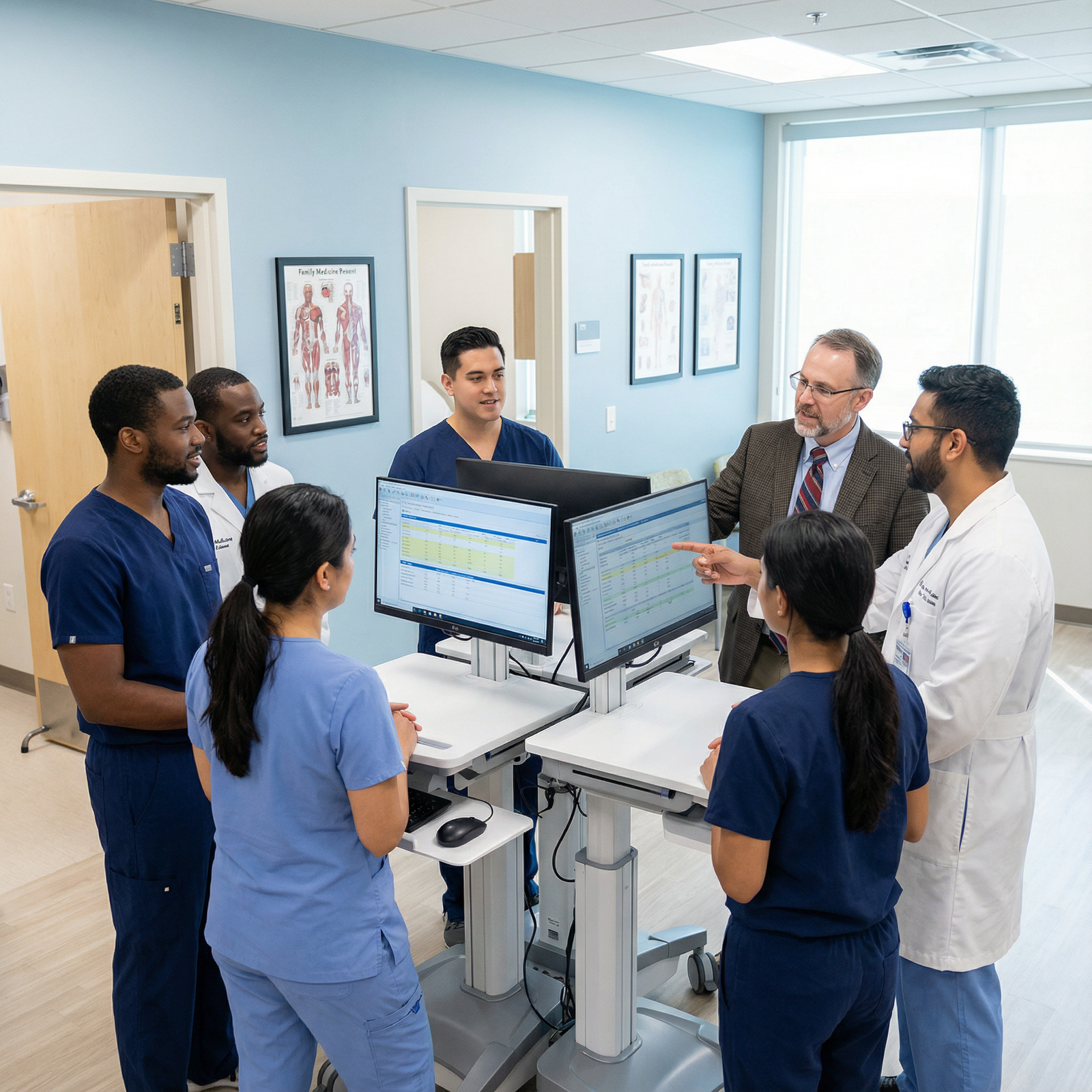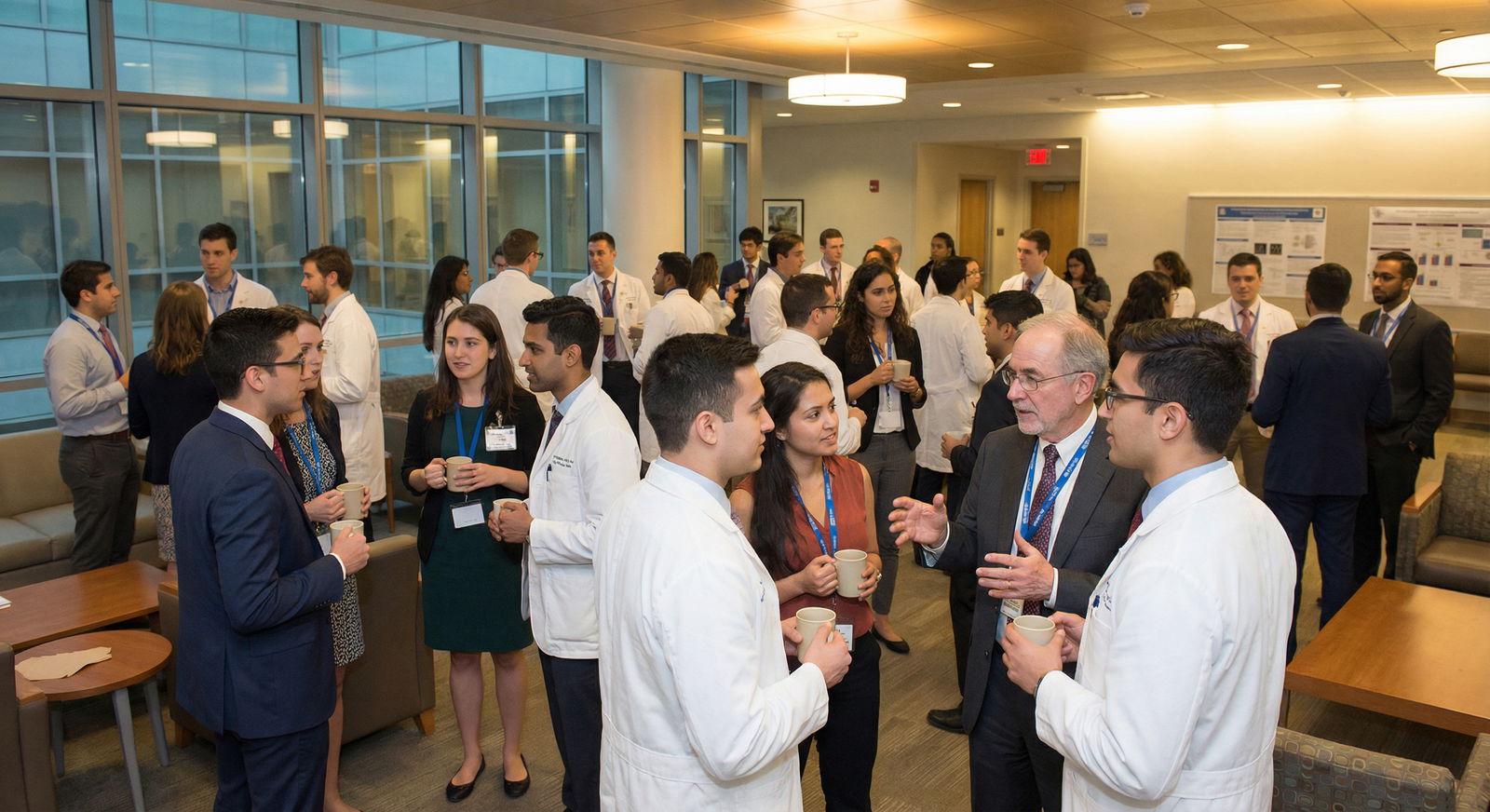A Comprehensive Guide to Specialties in Internal Medicine Residency

Choosing a path within internal medicine residency is one of the most defining decisions of your medical career. Internal medicine offers a wide range of subspecialties—from cardiology to gastroenterology to infectious disease—each with distinct patient populations, procedures, schedules, and long‑term career trajectories.
This guide expands on the major specialties within internal medicine, clarifies training pathways, and offers practical tips to help you align your residency and fellowship plans with your interests, values, and lifestyle goals.
Understanding Internal Medicine as a Foundation
Internal medicine is the backbone of adult medical care. As an internist, you become an expert in diagnosing, managing, and preventing complex and chronic diseases in adult patients, often functioning as both primary care physician and consultant.
Core Features of Internal Medicine
- Adult-focused care: Typically ages 18 and up, including young adults, middle-aged patients, and older adults with multiple comorbidities.
- Whole-patient perspective: Internists integrate findings across cardiovascular, respiratory, endocrine, renal, hematologic, and other systems.
- Complex problem-solving: Many patients present with multisystem disease, diagnostic uncertainty, and overlapping conditions.
- Continuity and coordination: Internists often coordinate care among multiple specialists and across inpatient–outpatient settings.
Because of this broad focus, internal medicine residency is the primary gateway to many of the most sought-after subspecialties in medicine.
Major Internal Medicine Subspecialties: Overview and Insights
Below are key internal medicine subspecialties you’ll encounter during residency. For each, we’ll highlight scope of practice, training, and practical considerations to help you determine fit.
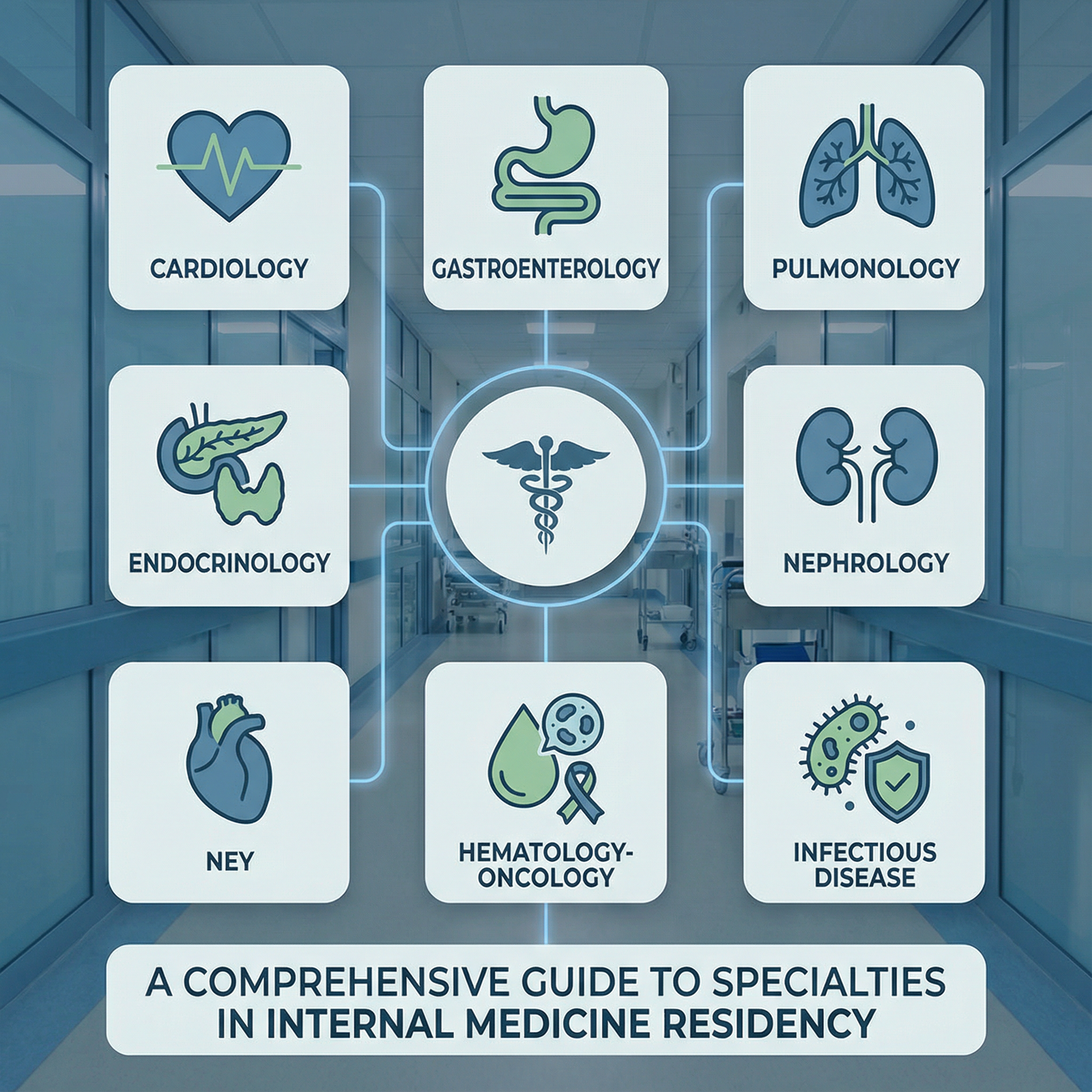
1. Cardiology: The Heart of Internal Medicine
Cardiology is consistently one of the most competitive and visible specialties within internal medicine.
Scope and Practice
Cardiologists diagnose and manage cardiovascular diseases, including:
- Coronary artery disease and myocardial infarction
- Heart failure and cardiomyopathies
- Cardiac arrhythmias (e.g., atrial fibrillation, ventricular tachycardia)
- Valvular heart disease
- Congenital heart disease (often in collaboration with pediatric cardiologists)
- Preventive cardiology and risk factor modification (hypertension, hyperlipidemia)
Practice settings may include outpatient clinics, inpatient consult services, coronary care units, cath labs, and advanced heart failure/transplant centers.
Training Pathway
- 3 years of internal medicine residency
- 3 years of cardiology fellowship (adult cardiovascular disease)
- Optional additional 1–2 years for sub-subspecialization:
- Interventional cardiology
- Electrophysiology
- Advanced heart failure and transplant
- Cardiac imaging
Fellowship training includes intensive exposure to:
- Echocardiography (TTE, TEE)
- Cardiac catheterization and coronary angiography
- Nuclear cardiology and advanced imaging (CT/MRI)
- Management of complex inpatients in CCU/ICU settings
Key Considerations for Aspiring Cardiologists
- Procedural vs. non-procedural mix: Interventional cardiology and EP are highly procedural. Non-invasive cardiology blends clinic, imaging, and inpatient consults.
- Acute, high-stakes care: Many cardiology emergencies are time-sensitive, requiring rapid decisions under pressure.
- Lifestyle: Call responsibilities can be intense, especially in interventional roles. Non-invasive or imaging-focused careers may offer more predictable hours.
- Career opportunities: Demand remains high globally. Academic and private practice roles are widely available but fellowship spots are competitive.
If you’re energized by acute care, physiology, and procedures, and you enjoy longitudinal management of chronic conditions like heart failure, cardiology may be an excellent fit.
2. Gastroenterology: The Digestive System and Beyond
Gastroenterology (GI) specializes in disorders of the digestive tract and hepatobiliary system, blending cognitive medicine with a strong procedural focus.
Scope and Practice
Gastroenterologists diagnose and treat:
- Esophageal disorders (GERD, dysphagia)
- Peptic ulcer disease and H. pylori infection
- Inflammatory bowel disease (Crohn’s disease, ulcerative colitis)
- Irritable bowel syndrome and functional GI disorders
- Liver disease (hepatitis, cirrhosis, NAFLD)
- Pancreatic and biliary disease
- Gastrointestinal bleeding and GI cancers
GI practice often includes both clinic and endoscopy time, with procedures forming a significant portion of the day.
Training Pathway
- 3 years internal medicine residency
- 3 years gastroenterology fellowship
- Optional advanced training (1 year) in:
- Advanced/therapeutic endoscopy (ERCP, EUS)
- Hepatology / transplant hepatology
- Motility disorders
Fellowship emphasizes:
- Colonoscopy and polypectomy
- Upper endoscopy (EGD)
- Management of GI bleeding
- Interpretation of imaging and functional tests (e.g., manometry)
Key Considerations for Aspiring Gastroenterologists
- High procedural volume: GI is ideal if you enjoy technical skills and immediate procedural outcomes.
- Screening and prevention: Colonoscopy plays a major role in colorectal cancer prevention, offering tangible public health impact.
- Lifestyle: Many GI physicians have demanding but controllable schedules; endoscopy blocks are usually scheduled in advance, though call is needed for bleeding and urgent procedures.
- Competitiveness: Like cardiology, gastroenterology is among the more competitive internal medicine fellowships.
GI can be particularly appealing if you enjoy hands-on procedures, chronic disease management (IBD, liver disease), and preventive care in your medical residency career planning.
3. Pulmonology (Pulmonary Medicine) and Critical Care
Pulmonology focuses on respiratory disease, often paired with critical care medicine.
Scope and Practice
Pulmonologists manage:
- Asthma and chronic obstructive pulmonary disease (COPD)
- Interstitial lung diseases
- Pulmonary hypertension
- Pulmonary embolism and venous thromboembolism
- Sleep-disordered breathing (sleep apnea)
- Lung infections and complications of systemic diseases
Those trained in critical care medicine also manage:
- Mechanically ventilated patients
- Septic shock and multi-organ failure
- Post-operative and trauma patients (often in collaboration with other specialties)
- Complex ICU-level problems requiring invasive monitoring and life support
Training Pathway
Common pathways include:
- 3 years internal medicine + 2–3 years pulmonary and critical care medicine (combined)
- Less commonly, pure pulmonary or pure critical care fellowships
Fellowship training covers:
- Ventilator management and advanced respiratory support
- Bedside procedures (bronchoscopy, thoracentesis, chest tube insertion)
- Pulmonary function testing and interpretation
- ICU management and multidisciplinary care
Key Considerations for Aspiring Pulmonologists
- Critical care intensity: Expect high-acuity patients and emotionally charged situations, often with end-of-life discussions.
- Procedural opportunities: Bronchoscopies, thoracenteses, and ICU procedures are central to practice.
- Schedule and lifestyle: ICU weeks can be demanding with long hours; outpatient-focused pulmonary practice can provide more routine hours between ICU blocks.
- Evolving field: Post-COVID, pulmonary and critical care have gained even more visibility and complexity.
If you thrive in high-acuity environments, enjoy physiology and ventilator management, and value a mix of inpatient intensity and outpatient continuity, pulmonary/critical care is worth serious consideration.
4. Endocrinology: Mastering Hormones and Metabolism
Endocrinology focuses on the body’s hormonal systems and metabolic regulation. It tends to be less procedurally heavy and more focused on long-term, relationship-based care.
Scope and Practice
Endocrinologists commonly manage:
- Type 1 and type 2 diabetes mellitus
- Thyroid disorders (hypo/hyperthyroidism, nodules, thyroid cancer)
- Adrenal and pituitary disorders
- Calcium and bone metabolism disorders (osteoporosis, hyperparathyroidism)
- Reproductive and gonadal disorders
- Lipid and metabolic syndrome management
Training Pathway
- 3 years internal medicine residency
- 2 years endocrinology fellowship
Fellowship emphasizes:
- Complex diabetes management, including insulin pumps and CGMs
- Interpretation of dynamic hormone tests and imaging
- Collaborative care with surgery, oncology, and primary care
Key Considerations for Aspiring Endocrinologists
- Chronic, longitudinal care: Many endocrine conditions require lifelong management, allowing you to build sustained patient relationships.
- Strong outpatient focus: Most endocrinologists are primarily clinic-based with relatively few emergent calls compared to cardiology or critical care.
- Lifestyle: Generally regarded as having a favorable work-life balance with predictable hours in many practice settings.
- Patient education: A significant portion of the role involves counseling patients on lifestyle, diet, and self-management.
Endocrinology is a strong match if you enjoy complex physiology, continuity of care, and a cognitive rather than highly procedural practice.
5. Hematology-Oncology: Blood Disorders and Cancer Care
Hematology-oncology (heme-onc) is a combined subspecialty focused on malignant and non-malignant blood disorders as well as solid tumors.
Scope and Practice
Hematologists/oncologists care for patients with:
- Leukemias, lymphomas, and multiple myeloma
- Anemias, thrombocytopenia, coagulation disorders
- Solid tumors (breast, lung, colon, prostate, etc.)
- Thrombosis and hypercoagulable states
- Bone marrow failure syndromes and post-transplant care
Practice settings include outpatient cancer centers, inpatient consult services, infusion centers, and research units.
Training Pathway
- 3 years internal medicine residency
- 3 years combined hematology-oncology fellowship
Fellowship includes:
- Management of chemotherapy, immunotherapy, and targeted therapy
- Bone marrow biopsy and aspiration
- Involvement in clinical trials and translational research
- Palliative care integration and complex symptom management
Key Considerations for Aspiring Hematologist-Oncologists
- Emotional intensity: You will accompany patients through life-threatening diagnoses, remissions, and sometimes palliative trajectories.
- Research-rich environment: Heme-onc is at the forefront of precision medicine and immunotherapy; academics and clinical trials are integral in many practices.
- Longitudinal relationships: Many oncology patients are followed for years, fostering deep therapeutic relationships.
- Variable workload: Schedules can be demanding, especially in academic centers, but many practices offer structured clinic and infusion schedules.
If you are drawn to oncology, complex decision-making, and the opportunity to significantly impact patient survival and quality of life, heme-onc can be profoundly rewarding.
6. Nephrology: The Kidney and its Systems
Nephrology centers on kidney function, fluid and electrolyte balance, and related systemic conditions.
Scope and Practice
Nephrologists manage:
- Acute kidney injury and chronic kidney disease (CKD)
- End-stage kidney disease and dialysis (hemodialysis, peritoneal dialysis)
- Electrolyte and acid-base disorders
- Hypertension, especially resistant hypertension
- Glomerular diseases and systemic conditions affecting kidneys
Training Pathway
- 3 years internal medicine residency
- 2 years nephrology fellowship
Fellowship training includes:
- Dialysis management and vascular access issues
- Kidney biopsy interpretation (in collaboration with pathology)
- Inpatient consults for AKI, electrolyte derangements
- Outpatient CKD clinics and dialysis rounds
Key Considerations for Aspiring Nephrologists
- Chronic care and continuity: Many CKD and dialysis patients require long-term, frequent follow-up, allowing relationship-building.
- Cognitive and analytic focus: Interpreting complex lab and fluid balance data is central.
- Lifestyle: Workload can be variable. Dialysis coverage and call can affect hours, but outpatient-focused practices can offer more stable schedules.
- Growing need: With rising rates of diabetes and hypertension, the demand for nephrology expertise remains substantial.
Nephrology may appeal if you enjoy physiology, multifactorial problem-solving, and longitudinal care of medically complex patients.
7. Infectious Disease: Diagnosing the Undiagnosed
Infectious disease (ID) is often described as “internal medicine on hard mode,” requiring strong diagnostic reasoning and broad knowledge.
Scope and Practice
ID specialists treat:
- Complicated bacterial, viral, fungal, and parasitic infections
- HIV/AIDS and other chronic infections
- Tuberculosis and atypical mycobacterial infections
- Sepsis and severe systemic infections
- Travel medicine and tropical diseases
- Antimicrobial stewardship and infection control in hospitals
Most ID physicians work in a consultative role for both inpatient and outpatient services.
Training Pathway
- 3 years internal medicine residency
- 2 years infectious disease fellowship
Fellowship emphasizes:
- Complex diagnostic evaluation, including extensive workups
- Management of multidrug-resistant organisms
- Immunocompromised host infections (post-transplant, chemotherapy)
- Public health, epidemiology, and hospital infection control
Key Considerations for Aspiring Infectious Disease Specialists
- Cognitive, puzzle-solving work: ID is ideal if you like deep dives into differential diagnoses and complex medical histories.
- Interdisciplinary collaboration: ID specialists frequently consult with surgeons, intensivists, oncologists, and others.
- Rapidly evolving field: Emerging pathogens, pandemics, and new antimicrobials make ID a dynamic and intellectually stimulating specialty.
- Lifestyle and compensation: Often more consult-heavy with fewer procedures; lifestyle can be balanced, though compensation may be lower than some procedural specialties.
If you enjoy detective work, epidemiology, and system-level impact (e.g., antimicrobial stewardship), ID offers a rich, intellectually satisfying career.
Beyond the Big Seven: Other Internal Medicine Subspecialties
While cardiology, gastroenterology, pulmonology, endocrinology, hematology-oncology, nephrology, and infectious disease are among the most commonly discussed, internal medicine residency can also lead to:
- Rheumatology: Autoimmune and inflammatory diseases (e.g., RA, SLE, vasculitis)
- Allergy and Immunology: Allergic disease, asthma, immune deficiencies
- Geriatrics: Care of older adults with complex comorbidities and functional issues
- Palliative Care: Symptom management and serious illness conversations
- Hospital Medicine (Hospitalist): General internal medicine focused on inpatient care without additional fellowship
These disciplines provide additional options if you gravitate toward particular patient populations or styles of practice.
Key Factors to Consider When Choosing an Internal Medicine Subspecialty
Choosing between these specialties during or after internal medicine residency requires honest reflection and strategic exploration.
1. Your Intrinsic Interests and Clinical “Fit”
Ask yourself:
- Which rotations have made time pass quickly because you were deeply engaged?
- Do you prefer high-acuity environments (ICU, CCU) or stable outpatient clinics?
- Are you most energized by procedures, diagnostics, longitudinal relationships, or systems-level work?
Use your residency electives strategically:
- Schedule rotations in cardiology, gastroenterology, and other specialties early if you’re considering competitive fellowships.
- Seek sub-internship or acting fellow experiences if your program offers them.
2. Lifestyle, Workload, and Work-Life Integration
Not all subspecialties are created equal when it comes to hours, call, and intensity:
- More intensive/call-heavy (often): Cardiology (especially interventional), pulmonary/critical care, heme-onc in some settings.
- Moderate intensity: Gastroenterology, infectious disease, nephrology.
- Generally more predictable hours: Endocrinology, rheumatology, some outpatient-focused roles.
Talk to attendings at different career stages (early, mid, and late-career) to get realistic, longitudinal perspectives.
3. Patient Population and Relationship Style
Reflect on:
- Do you enjoy long-term continuity (endocrinology, nephrology, rheumatology, oncology) or brief, intense interactions (critical care, consult-heavy services)?
- Are you comfortable with life-and-death decision-making on a regular basis (ICU, cardiology, heme-onc)?
- Are you drawn to specific patient demographics (older adults, young adults with chronic disease, immunocompromised populations)?
Your preferred style of patient relationship can significantly influence satisfaction within a given specialty.
4. Career Opportunities, Geography, and Job Market
The job market varies geographically and by subspecialty:
- Highly competitive fellowships (e.g., cardiology, gastroenterology) may require a stronger academic profile, research, and letters.
- Rural and underserved areas may have greater need and more flexibility in certain subspecialties.
- Consider whether you envision yourself in academic medicine, community practice, or a hybrid model.
Talk with your program leadership and recently graduated fellows about current trends in each field.
5. Research, Teaching, and Academic Interests
If you’re drawn to academic medicine, some specialties offer especially rich research environments:
- Hematology-oncology, cardiology, and infectious disease are often heavily research-oriented with robust clinical trial infrastructure.
- Consider whether you enjoy clinical research, outcomes research, quality improvement, basic science, or medical education.
Aligning your subspecialty with your academic strengths and interests can open additional career paths and leadership opportunities.
6. Long-Term Meaning, Impact, and Personal Values
Think beyond residency and fellowship:
- How do you want to impact patients and your community 10–20 years from now?
- Are you driven by preventive care, cutting-edge therapies, health equity, or global health?
- Which specialty best aligns with your values around life, death, and serious illness?
Shadowing, mentorship, and honest self-reflection are essential to making a choice that remains fulfilling over time.

Frequently Asked Questions (FAQ)
1. How long does training take for common internal medicine subspecialties?
Most internal medicine subspecialties require:
- 3 years of internal medicine residency, followed by:
- 2 years: Endocrinology, nephrology, rheumatology, infectious disease (most programs)
- 3 years: Cardiology, gastroenterology, hematology-oncology, pulmonary/critical care (typically 3 for combined)
Additional 1–2 years of advanced fellowship may be needed for areas such as interventional cardiology, advanced endoscopy, transplant hepatology, or electrophysiology.
2. How can I make myself competitive for cardiology or gastroenterology fellowships?
For highly competitive specialties such as cardiology and gastroenterology:
- Excel clinically: Strong evaluations and high-level performance on wards and subspecialty rotations.
- Pursue research: Engage in relevant research projects early in residency; aim for abstracts, posters, and publications.
- Seek mentorship: Identify faculty in your target specialty who can advise you and write strong letters of recommendation.
- Present and network: Attend national or regional conferences (e.g., ACC for cardiology, ACG/DDW for GI).
- Demonstrate commitment: Consistent involvement in specialty-specific activities (journal clubs, QI projects, electives).
3. Is it possible to change subspecialty interests during residency?
Yes. Many residents adjust their goals as they gain more exposure:
- Use PGY-1 and early PGY-2 to explore a variety of services.
- If your interests shift (e.g., from gastroenterology to infectious disease), discuss this early with mentors and program leadership.
- Be aware that late shifts may limit time for targeted research, but strong clinical performance and clear commitment can still open doors.
4. How important is lifestyle when choosing an internal medicine subspecialty?
Lifestyle considerations are important and legitimate:
- Consider call schedules, night/weekend coverage, and flexibility for family or personal interests.
- Talk with multiple attendings in each subspecialty to understand realistic day-to-day expectations and how schedules evolve over a career.
- Remember that lifestyle is also influenced by practice setting (academic vs. community vs. private practice), not just specialty.
Balance your passion for a field with a realistic appraisal of the lifestyle you want long-term.
5. What if I decide not to pursue a subspecialty after internal medicine residency?
Many internists choose not to subspecialize and instead:
- Work as hospitalists, providing general inpatient internal medicine care.
- Practice outpatient general internal medicine or primary care.
- Develop niche expertise in areas like quality improvement, medical education, or point-of-care ultrasound.
These paths can offer flexibility, broad clinical variety, leadership opportunities, and a shorter training timeline compared to additional fellowships.
Choosing a subspecialty within internal medicine residency is both an exciting and complex decision. By understanding the landscape of specialties such as cardiology, gastroenterology, pulmonology, endocrinology, hematology-oncology, nephrology, and infectious disease—and by thoughtfully assessing your interests, strengths, and values—you can chart a medical residency path that is both professionally rewarding and personally sustainable.
Use your residency years to explore widely, seek honest mentorship, and reflect deeply. Internal medicine’s breadth is one of its greatest strengths; within it, you can almost certainly find a specialty that aligns with who you are and the kind of physician you aspire to become.

SmartPick - Residency Selection Made Smarter
Take the guesswork out of residency applications with data-driven precision.
Finding the right residency programs is challenging, but SmartPick makes it effortless. Our AI-driven algorithm analyzes your profile, scores, and preferences to curate the best programs for you. No more wasted applications—get a personalized, optimized list that maximizes your chances of matching. Make every choice count with SmartPick!
* 100% free to try. No credit card or account creation required.
